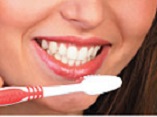Comparison of Dmft and Oral Health Behavior of 7-9-Year-Old Iranian and Afghan Children
DOI:
https://doi.org/10.31661/gmj.v13iSP1.3754Keywords:
Dental Caries; Emigration and Immigration; Diet; Afghan People; Iran; Dental Care for Children; Children’s oral health behaviorAbstract
Background: This study aimed to compare the dmft and oral health behavior of 7-9-year-old Iranian and Afghan children. Materials and Methods: This cross-sectional study was conducted on 87 Iranian and 70 Afghan children between 7-9 years, who were selected among elementary schoolchildren in Pishva, Iran by convenience sampling in 2023. The children underwent clinical dental examination by a dental explorer and a dental mirror under a head light to record their decayed, missed and filled teeth (dmft) index. Their oral health behavior was also evaluated by using a questionnaire completed by parents. Data were analyzed by the Chi-square test and Fisher’s exact test (alpha=0.05). Results: The dmft of Iranian children was significantly lower than of Afghan children (P<0.05). Also, Afghan children’s Oral health behavior. was lower than Iranian children (P<0.05) There was no significant difference between source of oral health information and toothbrushing technique between the two ethnic groups (P>0.05). Conclusion: Iranian 7-9-year-old children had lower dmft and superior oral health behavior than Afghan children, which highlights the effect of immigration and social and cultural factors on oral health behavior. Information drawn from this study can be helpful to design specific dental programms in order to provide better oral health for Afghan children.
References
Statistical Centre of Iran, https://www.amar.org.ir
Banihashem Rad SA, Esteves Oliveira M, Maklennan A, Castiglia P, Campus G. Oral health inequalities in immigrant populations worldwide: a scoping review of dental caries and periodontal disease prevalence. BMC Public Health. 2024;24(1):19354.
https://doi.org/10.1186/s12889-024-19354-4
PMid:39044172 PMCid:PMC11267954
Borrell LN, Reynolds JC, Fleming E, Shah PD. Access to dental insurance and oral health inequities in the United States. Community Dent Oral Epidemiol. 2023;51(4):615-620.
https://doi.org/10.1111/cdoe.12848
PMid:36812148
Park J, Lee JY, Kaste LM, et al. Dental Caries and Preventive Dental Visits Among Children in the U.S. Am J Prev Med. 2023;65(2):e45-e53.
Spinler K, Kofahl C, Ungoreit J, Heydecke G, Dingoyan D, Aarabi G. Access Barriers to Dental Treatment and Prevention for Turkish Migrants in Germany - A Qualitative Survey. Int J Environ Res Public Health. 2022;19(11):6789.
https://doi.org/10.3389/fpubh.2022.862832
PMid:35692338 PMCid:PMC9178233
World Health Organization. Oral health surveys: basic methods. 5th ed. Geneva: World Health Organization; 2013.
Folayan MO, Tantawi ME, Virtanen JI, El Tantawi M, Oyedele TA, Alade M, et al. Factors associated with early childhood caries incidence and severity in Nigeria: a prospective cohort study. BMC Oral Health. 2021;21:24.
https://doi.org/10.1186/s12903-021-01780-0
PMid:34425793 PMCid:PMC8383461
Alanzi A, Husain F, Husain H, Hanif A, Baskaradoss JK. Does the severity of untreated dental caries of preschool children influence the oral health-related quality of life? BMC Oral Health. 2023;23:552.
https://doi.org/10.1186/s12903-023-03274-7
PMid:37563589 PMCid:PMC10416462
Almășan H, Mureșan A, Dănilă I, et al. Oral Health of 7- to 9-Year-Old Children Born Prematurely-A Case-Control Study. Dent J (Basel). 2024;12(12):421.
https://doi.org/10.3390/dj12120421
PMid:39727478 PMCid:PMC11674599
Statistical Center of Iran. National Population and Housing Census 2016. Tehran: Statistical Center of Iran; 2017.
Gatou T, Koletsi Kounari H, Mamai-Homata E. Dental caries prevalence and treatment needs of 5- to 12-year-old children in relation to area-based income and immigrant background in Greece. Int Dent J. 2011 Jun;61(3):144-51.
https://doi.org/10.1111/j.1875-595X.2011.00031.x
PMid:21692785 PMCid:PMC9374840
World Health Organization (1987). Oral health surveys. Basic methods (3rd ed). Geneva: World Health Organization.
World Medical Association. World Medical Association Declaration of Helsinki: ethical principles for medical research involving human subjects. JAMA. 2013;310(20):2191-4.
https://doi.org/10.1001/jama.2013.281053
PMid:24141714
UNHCR. Islamic Republic of Iran: Solutions Strategy for Afghan Refugees (SSAR) 2018- 2019. Geneva: United Nations High Commissioner for Refugees; 2018.
Xiang B, Wong HM, Cao W, Perfecto AP, McGrath CPJ. Development and validation of the Oral Health Behavior Questionnaire for Adolescents based on the Health Belief Model (OHBQAHBM). BMC Public Health. 2020;20:701.
https://doi.org/10.1186/s12889-020-08851-x
PMid:32414375 PMCid:PMC7227318
Wigen TI, Wang NJ. Tooth brushing frequency and use of fluoride lozenges in children from 1.5 to 5 years of age: a longitudinal study. Community Dent Oral Epidemiol. 2014;42(5):395-403.
https://doi.org/10.1111/cdoe.12094
PMid:24428413 PMCid:PMC4101063
Hoover J, Vatanparast H, Uswak G. Risk determinants of dental caries and oral hygiene status in 3-15 year-old recent immigrant and refugee children in Saskatchewan, Canada: a pilot study. J Immigr Minor Health. 2017;19(6):1315-1321.
https://doi.org/10.1007/s10903-016-0452-9
PMid:27349936 PMCid:PMC5681969
Nicol P, Anthonappa R, King N, Slack-Smith L, Cirillo G, Cherian S. Caries burden and efficacy of a referral pathway in a cohort of preschool refugee children. Aust Dent J. 2015 Mar;60(1):73-9.
https://doi.org/10.1111/adj.12269
PMid:25721281
Alrashidi M, Cervantes Mendez MJ, Farokhi MR. A randomized clinical trial preventive outreach targeting dental caries and oral-health-related quality of life for refugee children. Int J Environ Res Public Health. 2021 Feb 10;18(4):1686.
https://doi.org/10.3390/ijerph18041686
PMid:33578661 PMCid:PMC7916325
Al-Ani A, Takriti M, Schmoeckel J, Alkilzy M, Splieth CH. National oral health survey on refugees in Germany 2016/2017: caries and subsequent complications. Clin Oral Investig. 2021 Apr;25(4):2399-2405.
https://doi.org/10.1007/s00784-020-03563-3
PMid:33011846 PMCid:PMC7966123
Popa S, Popa M, Monea A, et al. The Impact of Parental Education on Schoolchildren's Oral Health-A Multicenter Cross-Sectional Study in Romania. Int J Environ Res Public Health. 2022;19(17):11102.
https://doi.org/10.3390/ijerph191711102
PMid:36078817 PMCid:PMC9518154

Published
How to Cite
Issue
Section
License
Copyright (c) 2024 Galen Medical Journal

This work is licensed under a Creative Commons Attribution 4.0 International License.







